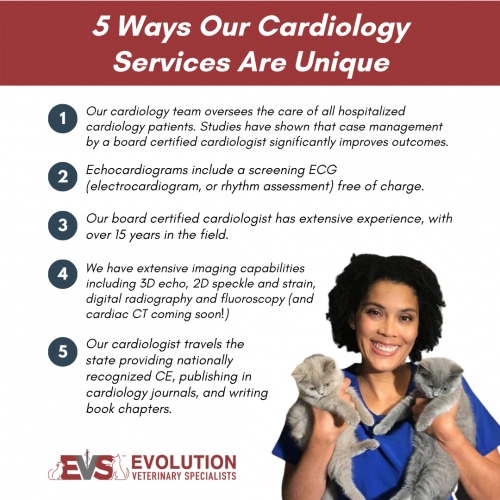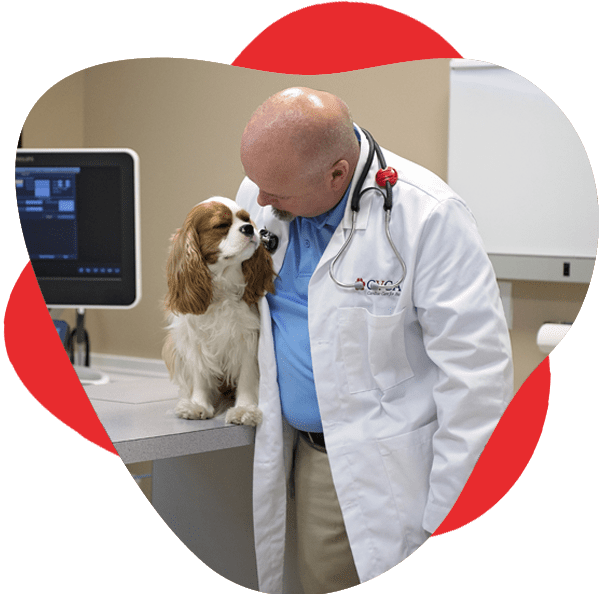How an Ultrasound For Dogs Can Reveal Hidden Health Concerns}
What You Need to Find Out About Vet Solutions: A Review of Diagnostic Tools and Procedures
Vet services play a vital function in maintaining the health and wellness of animals. Routine examinations can reveal covert wellness concerns early on. Numerous diagnostic tools and procedures, such as blood tests and imaging strategies, provide essential insights into an animal's well-being. Recognizing these approaches is crucial for animal owners. What particular analysis procedures are most generally made use of, and just how can they impact a pet dog's therapy plan?
Importance of Normal Veterinary Check-Ups
While lots of family pet owners might underestimate the value of regular vet check-ups, these visits are crucial for maintaining a pet's total health and wellness. Routine visits to the veterinarian enable very early detection of prospective wellness problems before they intensify into severe issues. Regular examinations often include vaccinations, which are important for avoiding transmittable diseases that can badly impact a pet dog's health. In addition, these appointments offer a possibility for veterinarians to analyze the animal's weight, dental health and wellness, and overall condition, making certain that the pet dog is thriving. Throughout these visits, pet dog owners can likewise receive valuable guidance on diet, exercise, and preventive care customized to their specific family pet's requirements.
Typical Diagnostic Treatments in Veterinary Medication
In veterinary medicine, exact diagnosis is crucial for efficient therapy. Typical analysis procedures include blood testing strategies, advanced imaging modern technologies, and urinalysis, each playing a considerable function in recognizing wellness problems. Understanding these techniques improves the capability to supply proper take care of animal individuals.
Blood Checking Strategies
Blood testing methods act as necessary analysis devices in vet medication, allowing veterinarians to assess the health and wellness of pets accurately. These strategies include collecting blood samples to examine various elements, such as white and red blood cells, platelets, and biochemical markers. Typical examinations consist of full blood matters (CBC), which examine general health and wellness and discover infections, and biochemical panels, which assess body organ function and metabolic standing. Furthermore, serological tests can recognize specific conditions with antibody detection. Blood screening is minimally invasive and gives essential info that assists in identifying problems, keeping an eye on health status, and assessing feedbacks to treatments. Generally, these methods play an important function in ensuring optimal treatment for pet dogs and animals alike.
Imaging Technologies Utilized
Analysis imaging innovations are essential devices in vet medication, matching blood testing strategies by offering aesthetic insights into a pet's inner frameworks. Usual imaging techniques consist of X-rays, which work for examining bone fractures and spotting international items, and ultrasound, which enables real-time visualization of soft cells and body organs. Magnetic vibration imaging (MRI) provides thorough photos of complex anatomical locations, especially in neurological analyses. Calculated tomography (CT) supplies cross-sectional images, enhancing diagnostic accuracy for various problems. Each of these modern technologies help vets in detecting ailments, preparing therapies, and monitoring healing. By incorporating imaging technologies, veterinary specialists can better analyze a pet's wellness and make notified decisions regarding their treatment.
Urinalysis and Diagnostics
Urinalysis acts as a critical diagnostic device in vet medicine, supplying valuable understandings into a pet's overall wellness and aiding in the detection of different conditions. This non-invasive treatment assesses urine samples to evaluate kidney function, hydration standing, and metabolic conditions. Usual components taken a look at include particular gravity, pH degrees, sugar, healthy proteins, and the visibility of blood or germs. Unusual searchings for can indicate issues such as urinary system system infections, diabetic issues mellitus, or kidney illness. To enhance diagnostic precision, urinalysis is typically performed along with various other tests, such as blood job and imaging research studies. Early discovery with urinalysis can lead to prompt interventions, enhancing the diagnosis for numerous vet clients. It is a vital element of extensive vet care.
Comprehending Blood Tests and Research Laboratory Analysis
Recognizing blood tests and lab analysis is essential in veterinary medicine as it helps in identifying various health and wellness problems in animals. Different sorts of blood examinations give vital details concerning an animal's interior state, while interpreting lab results needs careful factor to consider of numerous factors. This section will certainly check out the kinds of blood examinations available and the importance of their results.
Kinds Of Blood Examinations
Blood examinations play a vital duty in veterinary medicine, offering necessary understandings into a pet's health and wellness standing. Numerous kinds of blood examinations are utilized, each offering different objectives. Total blood matters (CBC) assess general health and find conditions such as anemia or infection. Biochemical accounts review body organ feature by measuring electrolytes and enzymes, using understandings right into metabolic health and wellness. Serological examinations recognize details antibodies or virus, aiding in the medical diagnosis of infections or autoimmune illness. Blood inputting assurances safe transfusions, while coagulation examinations determine the blood's capacity to embolisms, crucial for medical procedures. These examinations jointly improve diagnosis, therapy preparation, and tracking of an animal's health, highlighting the value of detailed research laboratory analysis in veterinary care.

Interpreting Laboratory Results
An extensive evaluation of lab results is crucial for accurate diagnosis and treatment in veterinary medication. Analyzing lab results calls for an understanding of normal referral varieties and the value of deviations. Blood examinations can disclose different health and wellness signs, such as organ feature, electrolyte balance, and the visibility of infections. Veterinarians must take into consideration the entire professional photo, consisting of the animal's background, health examination searchings for, and any kind of signs offered. Variants in results may arise from variables such as age, breed, and underlying health problems. Lab results should not be watched in isolation yet instead as part of an all-encompassing analysis method. Precise analysis enables for customized treatment plans and far better outcomes for vet people.
Imaging Techniques: X-rays, Ultrasounds, and Beyond
Imaging strategies are crucial tools in vet medication, offering essential insights into the health and health of animals. Among one of the most typically used techniques are Ultrasounds and x-rays. X-rays are important for envisioning bone frameworks, aiding vets identify cracks, tumors, or foreign items. This technique is quick and non-invasive, making it perfect for immediate situations.Ultrasounds, on the various other hand, utilize audio waves to develop pictures of soft cells and organs. This strategy is specifically valuable for analyzing the heart, abdominal area, and reproductive organs, allowing veterinarians to evaluate conditions like fluid build-up or organ abnormalities.Beyond X-rays and ultrasounds, progressed imaging techniques such as computed tomography (CT) and magnetic vibration imaging (MRI) are increasingly used in veterinary method. These approaches offer detailed cross-sectional images, improving the accuracy of diagnoses and treatment strategies. Cancer Veterinary Near Me. In general, imaging techniques play an important function in making certain reliable veterinary care
The Role of Biopsies in Diagnosing Animal Health And Wellness Issues
Precision in diagnosing discover here health and wellness problems in animals frequently depends upon using biopsies, which give conclusive info about tissue abnormalities. A biopsy entails the removal of a small example of cells for assessment under a microscope, permitting veterinarians to identify numerous conditions, consisting of infections, lumps, and inflammatory conditions. This analysis device is necessary for comparing malignant and benign developments, directing treatment choices, and assessing the intensity of a condition.Biopsies can be carried out using different techniques, such as needle ambition, incisional biopsies, or excisional biopsies, depending upon the place and kind of tissue included. The selection of method may affect recuperation time and the amount of cells accumulated. Ultimately, the information obtained from a biopsy can result in targeted treatments, enhancing end results for family pets encountering major health and wellness obstacles. Veterinarians highlight the importance of this procedure in attaining precise medical diagnoses and reliable treatment plans.
Advanced Diagnostic Equipment: Endoscopy and CT Checks

Advanced diagnostic tools, such as endoscopy and CT scans, play an essential role in modern-day vet medicine, using non-invasive approaches to envision inner frameworks and detect different conditions in animals. Endoscopy involves making use of a flexible tube equipped with an electronic camera, enabling vets to examine the intestinal tract and breathing system straight. This method can reveal problems such as lumps, international bodies, or inflammation, enabling targeted therapy plans.CT scans, on the other hand, utilize advanced imaging technology to develop comprehensive cross-sectional photos of the body (Cancer Veterinary Near Me). This approach is especially valuable for reviewing complicated structures like the mind, spine, and joints. By providing high-resolution photos, CT scans assist vets in identifying concerns that may not be evident with conventional radiography. Together, these innovative tools improve analysis precision, improve treatment end results, and ultimately add to much better total animal health and wellness administration

Translating Examination Results: What Pet Dog Owners Ought To Know
Understanding examination results can be a difficult task for pet dog proprietors, especially after advanced procedures like endoscopy and CT scans have actually been done. Interpreting these results calls for a grasp of clinical terminology and a clear understanding of what the searchings for suggest about the pet dog's health. Veterinarians commonly offer descriptions, but the intricacy of the outcomes can still result in confusion.Pet proprietors should proactively participate in discussions with their veterinarians, asking concerns to make clear any kind of unpredictabilities. It is necessary to understand typical versus abnormal outcomes and the effects for the family pet's therapy plan. Furthermore, identifying that some outcomes might call for additional screening or monitoring can you could look here aid owners remain informed regarding their animal's health trip. Ultimately, a joint strategy between animal proprietors and veterinary professionals promotes better wellness end results and enhances the overall treatment experience for animals.
Frequently Asked Inquiries
Just how Do I Select the Right Vet Center for My Family pet?
Choosing the right veterinary clinic involves looking into neighborhood alternatives, evaluating qualifications, going to centers, and assessing team communications (Ultrasound For Dogs). Focusing on recommendations from relied on resources can aid assure the most effective treatment and atmosphere for a family pet's wellness demands
What Should I Do if My Animal Refuses to Go to the Vet?
When a pet rejects to head to the veterinarian, it's recommended to remain tranquil, usage treats or playthings to attract them, and think about scheduling a home see if anxiousness persists. Patience and positive support are key.
Are There Telehealth Options for Vet Solutions?
Telehealth choices for veterinary services are progressively offered, enabling animal proprietors to talk to veterinarians from another location. These services enable discussions about health concerns, advice on small conditions, and follow-ups without requiring to go to a clinic.
How Usually Should My Pet Have Oral Examinations?
The frequency of oral check-ups for pet dogs usually depends on their age and type. Normally, veterinarians advise annual oral examinations, although some animals may need more constant brows through to keep optimal oral wellness.

What Are the Costs Linked With Vet Diagnostics?
The prices connected with vet diagnostics can differ extensively, commonly varying from fundamental tests like blood work to sophisticated imaging methods. Elements affecting expenditures consist of the facility's place, devices used, and particular tests needed for each and every family pet. Veterinary services play an important duty in preserving the health of pet dogs. While many pet dog owners might undervalue the relevance of routine veterinary exams, these visits are essential for maintaining a pet's general health. Furthermore, these visits offer a possibility for veterinarians to assess the animal's weight, dental wellness, and overall problem, guaranteeing that the pet dog is prospering. Precision in diagnosing wellness problems in pets commonly hinges on the use of biopsies, which give clear-cut info about tissue problems. Read Full Article Additionally, identifying that some results might call for more testing or tracking can help owners stay educated about their family pet's health journey.